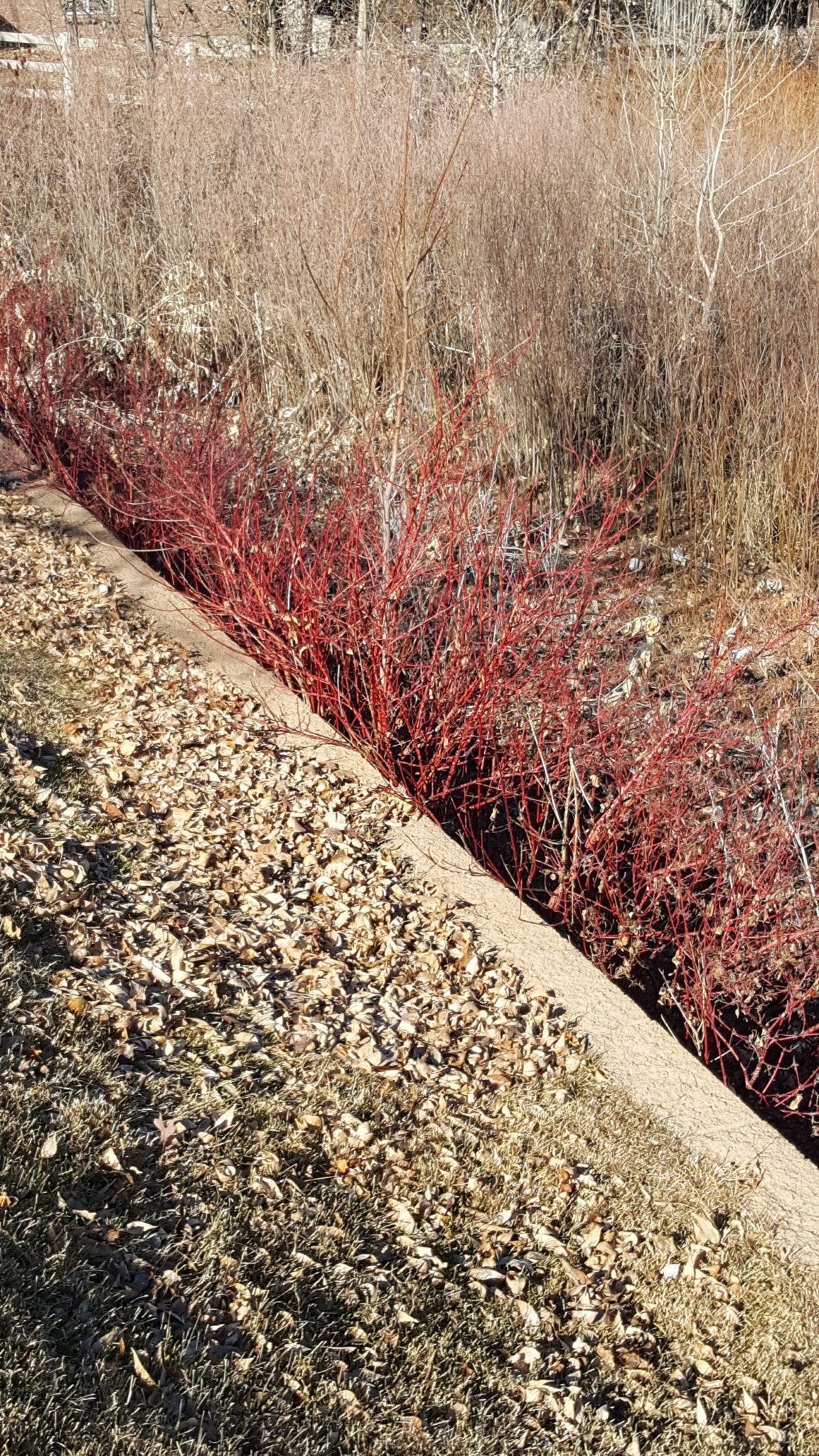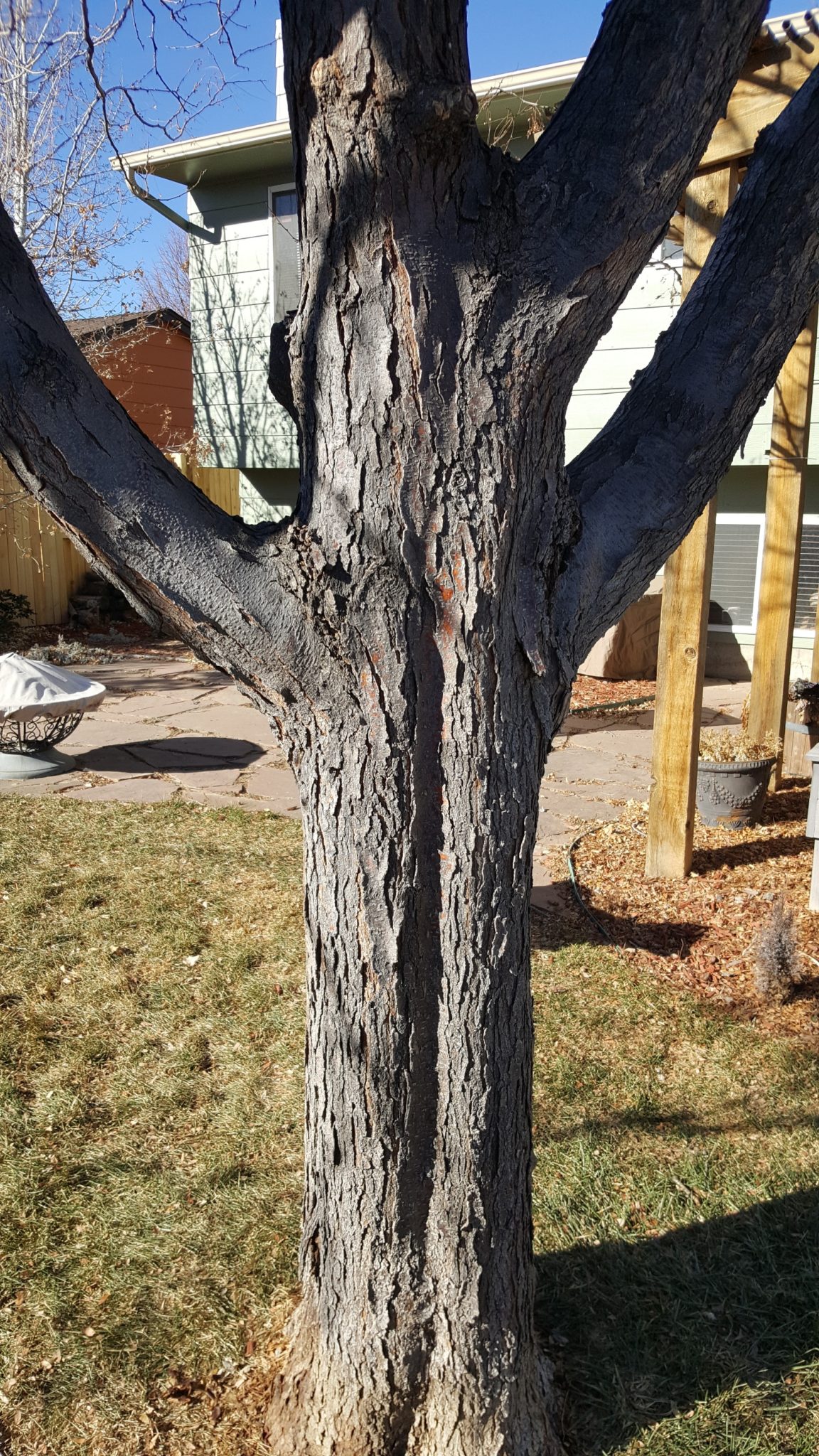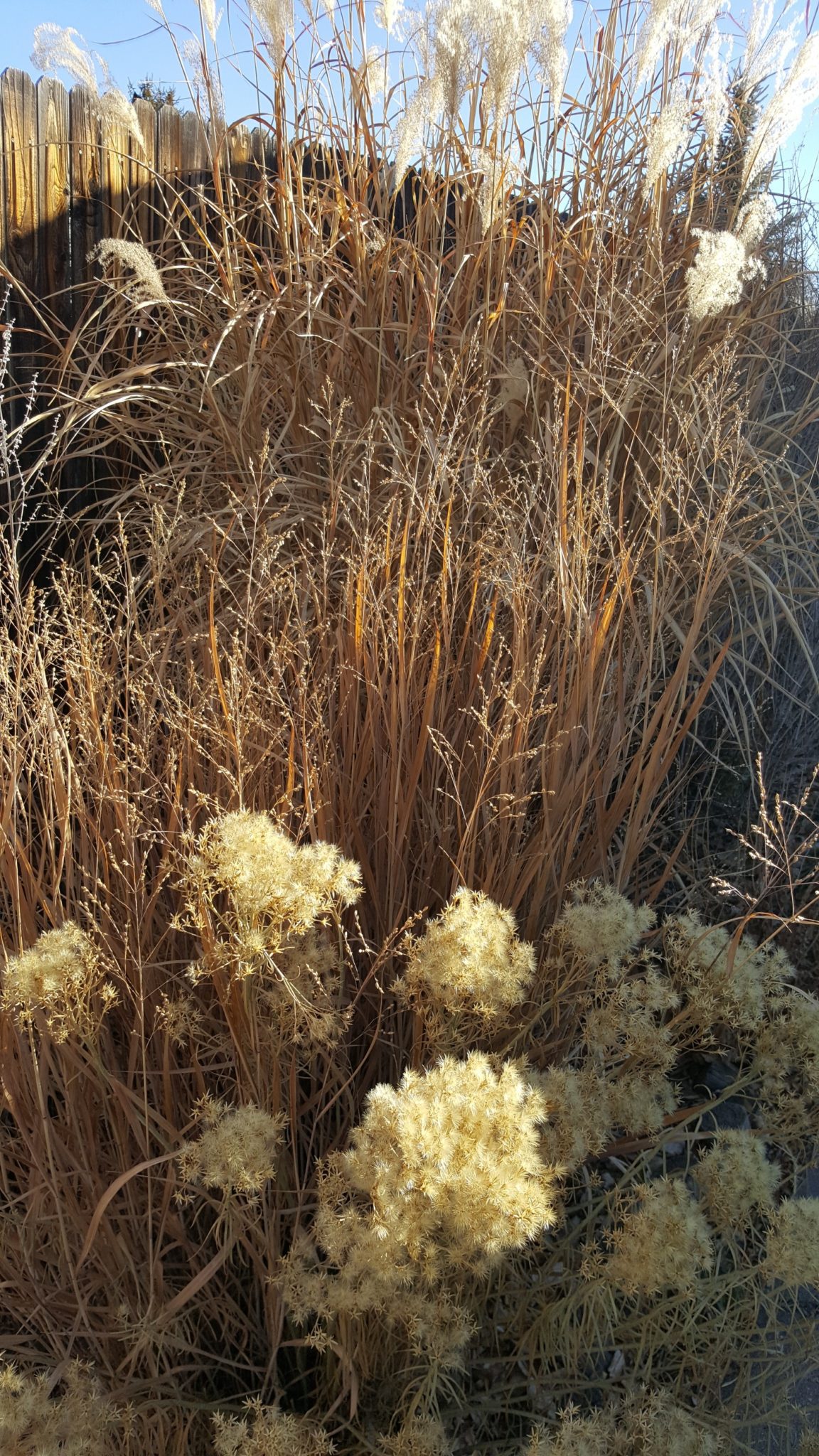
Myth of winter garden interest:

Soak up all the winter interest of the Red Twig Dogwood. (Click to see larger image. Note, it doesn’t get any better).
Invariably, around this time of year, garden magazines and gardening websites go on and on about something called “winter interest”. Winter interest is usually a list or suggestions of ways the gardener can make his or her garden look attractive in the colder months. Plant breeders use the term “four seasons of interest” on certain plants that have some feature that stands out in winter. Red Twig Dogwood is a case in point; it’s bare red branches provide a spot of color in the more somber months.

There’s nothing I enjoy more than sitting on the patio in the winter, freezing my ass off, just so I can appreciate this “interesting” tree bark.
Trees with unusual bark are suggested to provide your yard with “four seasons of interest”. I shit you not.
Folks, I am here to tell you, that unless you live in climes like San Diego or Tampa Bay, there is no such thing as winter interest in the garden. It’s an illusion. The garden is dormant, and no amount of squinting at it is going to make it interesting.
Landscape designers will talk about a garden’s “bones”. They are referring to a garden’s hardscaping. specifically paths, walkways, arbors, trellises, patio’s and ponds. Things that are permanent. A garden’s bones are very important because you want to build your garden around these features. Good bones help make a garden feel whole.
So you will hear gardening “experts” who speak of winter interest say that the garden’s bones are perhaps the most important item in creating winter interest. In other words, the secret to winter interest is having interesting…architecture.

Ornamental grasses left standing do actually provide some winter interest. (Click to see larger image)
However, all is not gloom and melancholy in the garden this time of year. You can find a few bright spots out there if you try. Leaving ornamental grasses standing through the winter season does in fact create a little pockets of beauty in the yard. There is just something about watching the dry stalks and plumes waving in a winter breeze. It’s a reminder that the winter doldrums will soon pass and the garden will one again erupt into wakefulness in just a few short months.
Nevertheless, if you want real “winter interest”, you’re going to have to step outside the ordered confines of your garden and into the natural world. Perhaps take a trip to the mountains or the seashore where you can soak up some real winter beauty is just the ticket to get through the “dismal” season.

